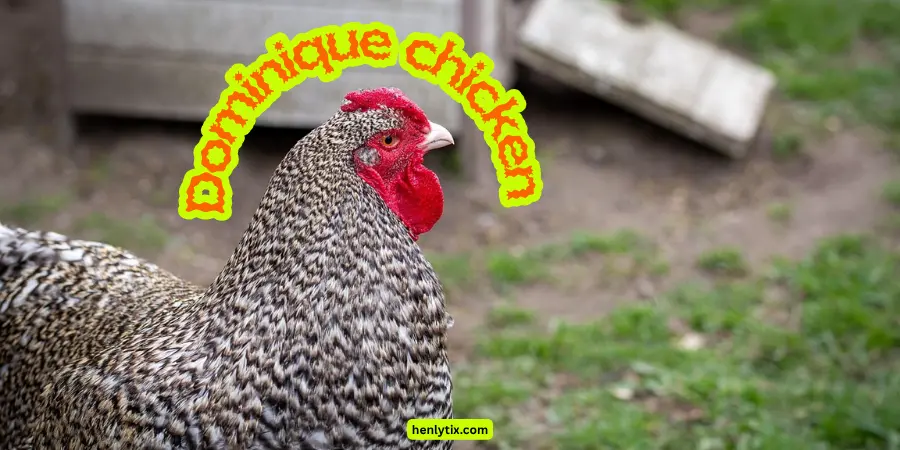The Dominique chicken is a unique breed that holds a special place in American history. Known as one of the oldest chicken breeds, it has its origins dating back to the 1750s when it was first brought to American farms. Some believe the breed was introduced by Pilgrims from southern England, while others think it came from the French colony of Saint Dominique (modern-day Haiti).
With its friendly personality and robust nature, the Dominique proved to be a popular dual-purpose bird suitable for both eggs and meat, making it an essential part of the livestock on many farms.
Dominique Chicken-Short Answer
The Dominique chicken is a friendly, hearty breed known for its small size, hardiness, and docile nature. It excels in egg production, laying 230-275 medium-size eggs per year, and is often considered a dual-purpose breed. With its distinctive barred patterning, rose comb, and ability to adapt to both cold and hot, humid climates, the Dominique is an excellent choice for families, beginner flocks, and those interested in reliable egg layers.
By the 1820s, Dominique chickens were being bred extensively on farms, and the breed was even showcased at the first poultry show in Boston, attracting 1,423 birds and over 10,000 people. These chickens were highly valued for their hardiness, able to withstand difficult conditions like the Great Depression and World War II.
They thrived on American farms thanks to their easy upkeep and ability to adapt to various climates, which made them ideal for farm life during tougher times. The breed was especially appreciated for its feather patterns and the distinctive rose comb, which made it stand out from other breeds like the Barred Rock.
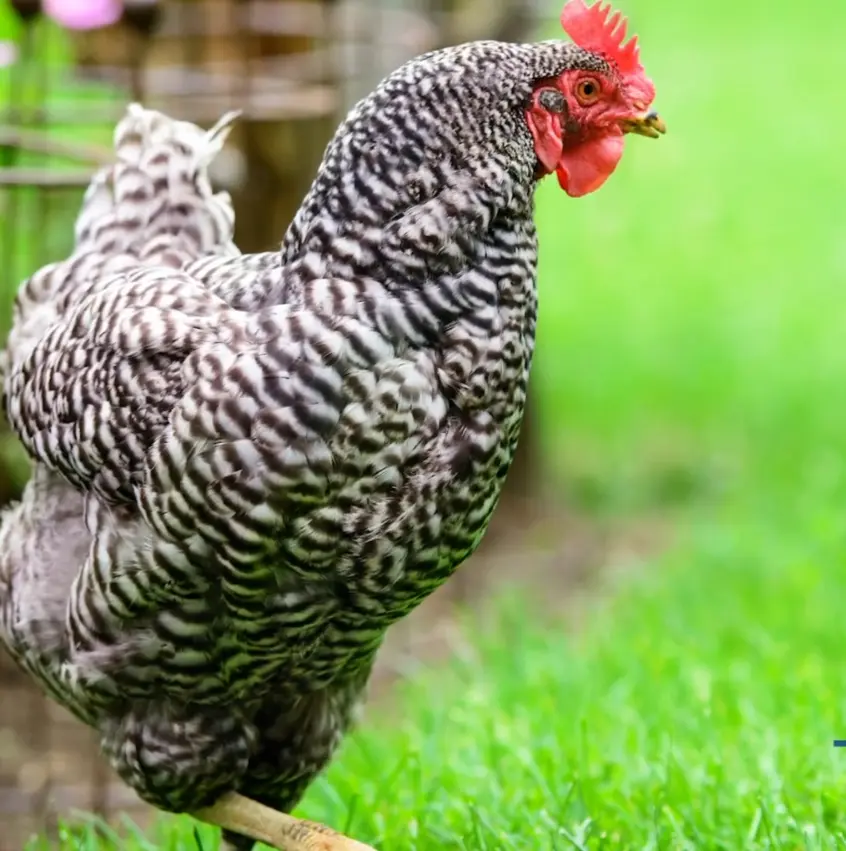
In terms of breed development, Dominique chickens have always been admired for their historical significance. The breed was once known as Pilgrim fowl in some regions and was primarily bred for uniformity and improved types by the late 1800s.
However, over time, the Plymouth Rock became more popular, overshadowing the Dominique. Today, despite its decline in commercial use, it remains a heritage breed loved for its unique history and personalities that continue to capture the interest of Dominique enthusiasts and chicken keepers around the world.
Development of the Plymouth Rock Breed
In the 1860s, Black Java chickens were crossed with single-combed Dominiques, resulting in the creation of the Plymouth Rock breed. This breed was slightly larger than the Dominique, yet very similar in appearance. The two breeds could have either a single comb or a rose-comb.
However, by 1870, the organizers of a poultry show in New York decided to make a key distinction: rose-combed barred birds would be shown as Dominiques, while single-combed barred birds would be entered as Plymouth Rocks.
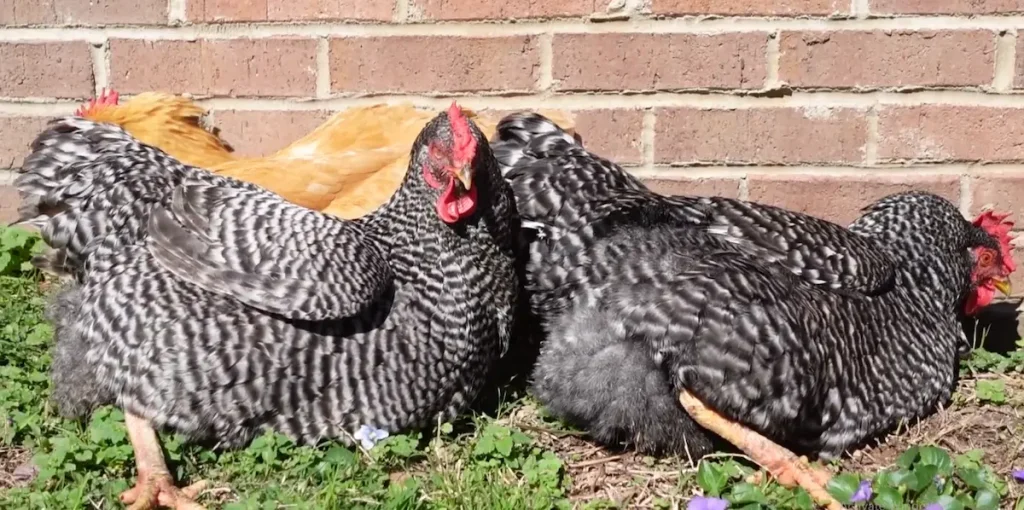
This decision was formally recognized in the Standard of Excellence in 1871, and the American Poultry Association included the Plymouth Rock in the first edition of the American Standard of Perfection.
The Plymouth Rock quickly gained recognition for its hardiness and rose-comb features, becoming a favored breed for farmers and exhibitors alike. Although it was initially inspired by Dominique and Black Java chickens, the farm breeds developed its unique identity, standing out in the poultry world.
If you’re interested in breeds known for their striking looks and friendly personalities, the Polish Chicken is another excellent choice to explore.
Decline and Survival Through the Years
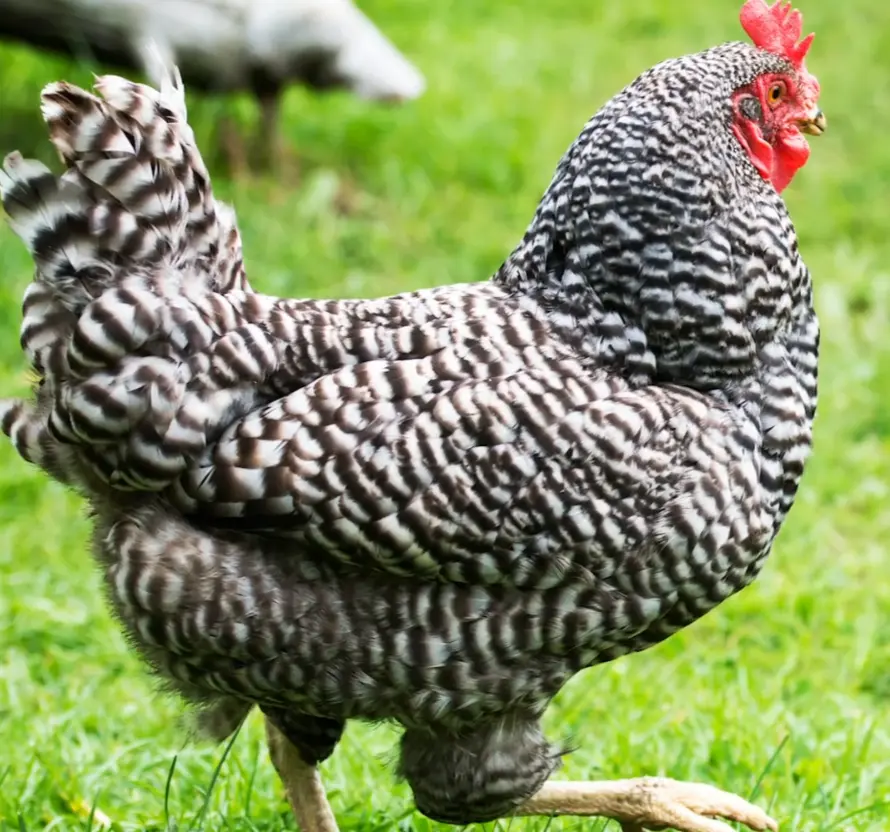
The Dominique chicken was once a popular breed, but its popularity started to fade in the 1920s due to the loss of many long-time Dominique enthusiasts and breeders. Despite the decline, the breed showed remarkable hardiness and continued to thrive during the Great Depression, where its low upkeep became a valuable trait.
After World War II, however, the expansion of commercial and industrial poultry operations in the United States led to a further decline in its numbers. Unlike the Plymouth Rock, which became a staple in the commercial market, the Dominique never gained the same level of commercial use, which is why it gradually faded in popularity.
The Effort to Save the Dominique Chicken
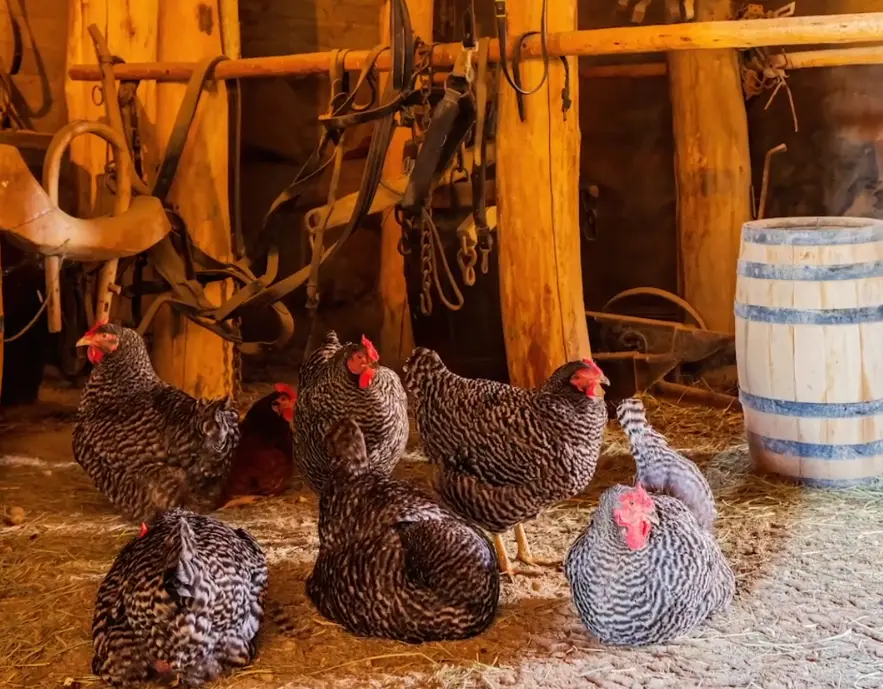
In 1970, there were only four known flocks of Dominique chickens in the United States. Concerned about the breed’s survival, dedicated individuals and organizations like The American Livestock Breeds Conservancy (ALBC), now known as the Livestock Conservancy, worked hard to rescue the breed.
They focused on preserving the old bloodlines and ensuring that the chickens remained pure. By 1973, the Dominique Club of America was established to help promote the breed and encourage fanciers to join the effort.
Reports from the Livestock Conservancy show that by 1983, the Dominique chicken numbers steadily rose, and by 2021, the breed had become stable, with the Livestock Conservancy census confirming its recovery and ongoing presence.
Physical Description of the Dominique Chicken
The Dominique chicken is a medium-sized bird with a distinctive black and white cuckoo-like pattern on its feathers, often referred to as hawk-colored. Males weigh around 7 lbs, while females are slightly smaller at 5 lbs. The breed has a broad body with a full shape and an almost “u” shaped back outline.
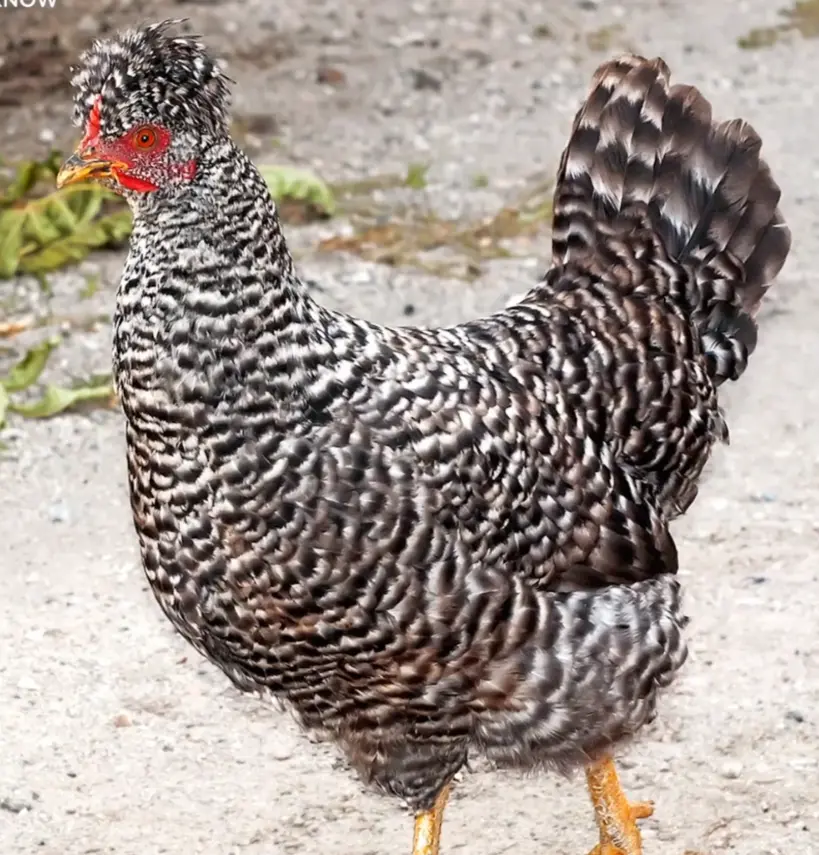
Dominique chickens are easily recognized by their rose comb, which has a low profile and a short upward curving spike. Their long tail feathers are held the highest of all American chicken breeds, making them stand out. The birds also have bright red wattles, earlobes, and a beak, while their skin, legs, and feet are yellow.
Their tight plumage and tightly-arranged feathers help them resist frostbite, and they carry their heads high with arched necks, making them well-suited for survival against predators.
Traits of Dominiques
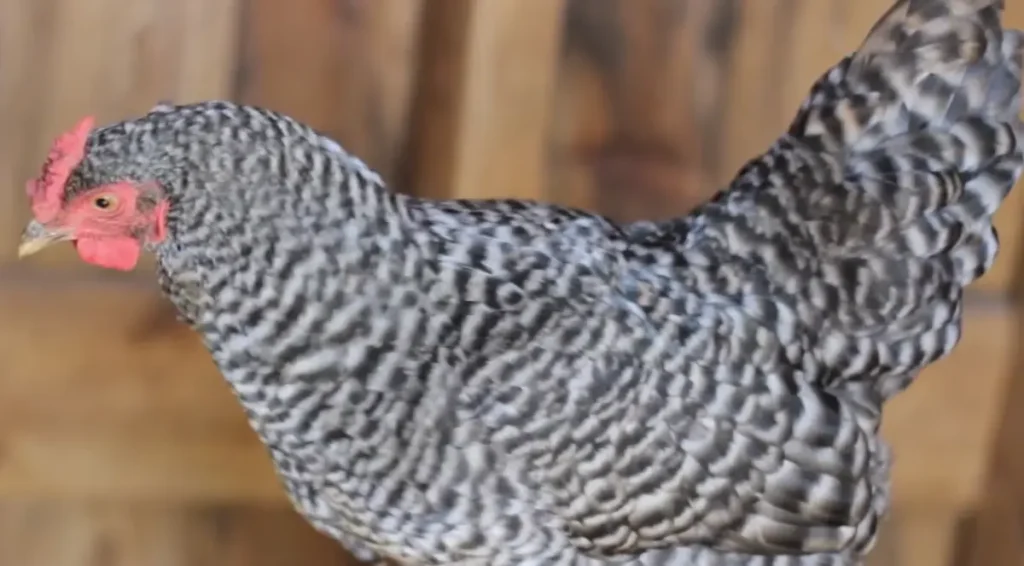
The Dominique chicken is a great choice for a family chicken because of its friendly and docile nature. It thrives in various living conditions, whether it’s cold or heat, making it a winter hearty breed. Known for laying around 250 eggs per year, Dominique chickens are excellent egg layers that remain productive for 6-8 years, although their egg production slightly declines after the first couple of years.
They have a rose comb that helps prevent frostbite in colder climates, and their medium size and small build make them easy to manage, especially in a beginner flock. While they are not overly noisier than other breeds, their tail feathers are quite beautiful and they often stand upright, showcasing their unique appearance. Some Dominique chickens can become broody, though they are mostly used as dual-purpose birds.
If you’re interested in another unique chicken breed with a rich history, be sure to check out the Plymouth Rock Chicken, which shares similar traits and is equally prized among poultry enthusiasts.
Traits of Dominiques
The Dominique chicken is a perfect family chicken, known for being hearty, docile, and friendly. These birds do well in both heat and cold, making them adaptable to various living conditions. They are also excellent egg layers, averaging 250 eggs per year.
Their lifespan is typically between 6-8 years, depending on care and the environment they are kept in. Dominiques are ideal for a beginner flock, as they get along well with other breeds and are not much noisier than a normal chicken.
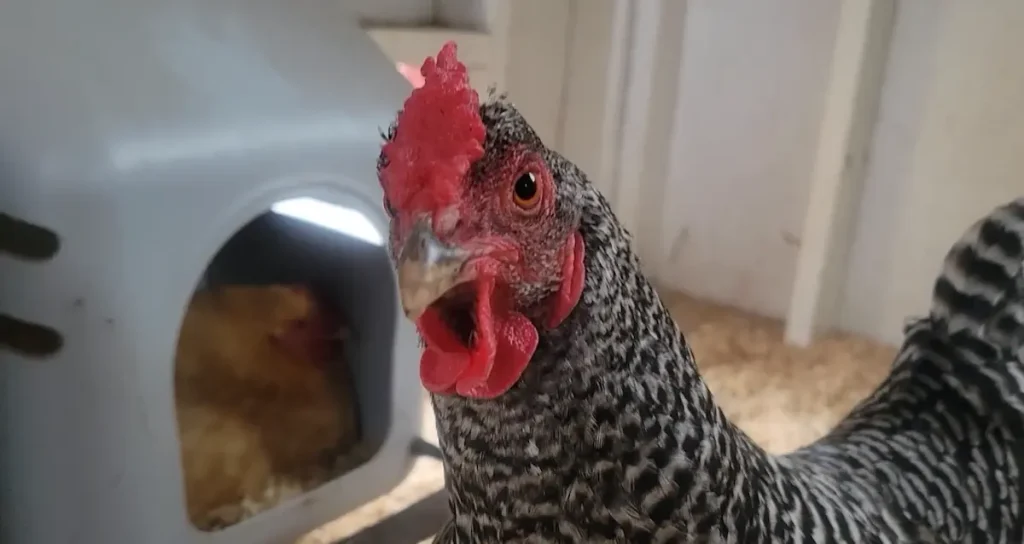
With a rose comb, Dominiques are also winter hearty, which helps them avoid frostbite in cold weather. Their tightly-arranged plumage and low profile add to their cold-weather resistance.
The breed is dual-purpose, known for both egg production and being good mothers, but they are more popular as egg layers. Roosters of the breed have stunning tail feathers and typically stand upright. Dominiques are also broody, but not as much as some other breeds.
These chickens have great feathering, with hawk-colored, cuckoo-patterned plumage, making them less visible to predators. They are also foragers, making them well-suited for both hot, humid climates and confinement. Males generally weigh 7 lbs, while females weigh 5 lbs.
Their broad body, full body, and long tail feathers are characteristics of this breed. The wattles, earlobes, beak, skin, legs, feet, and yellow color make them visually appealing. Dominiques hatch well, feather early, and mature young, making them a versatile and attractive choice for any farmer.
Personality and Temperament
The Dominique chicken is known for its friendly and curious nature, making them great pets for a family-friendly environment. These chickens are quite nosey and love to stalk you while you’re doing yard work or garden work.
They are natural foragers and enjoy searching for worms. With their barred patterning, they blend well with their surroundings, helping them stay hidden from predators. Dominique hens are known to be active and can roam freely, but they prefer staying close to the action rather than going on long expeditions.
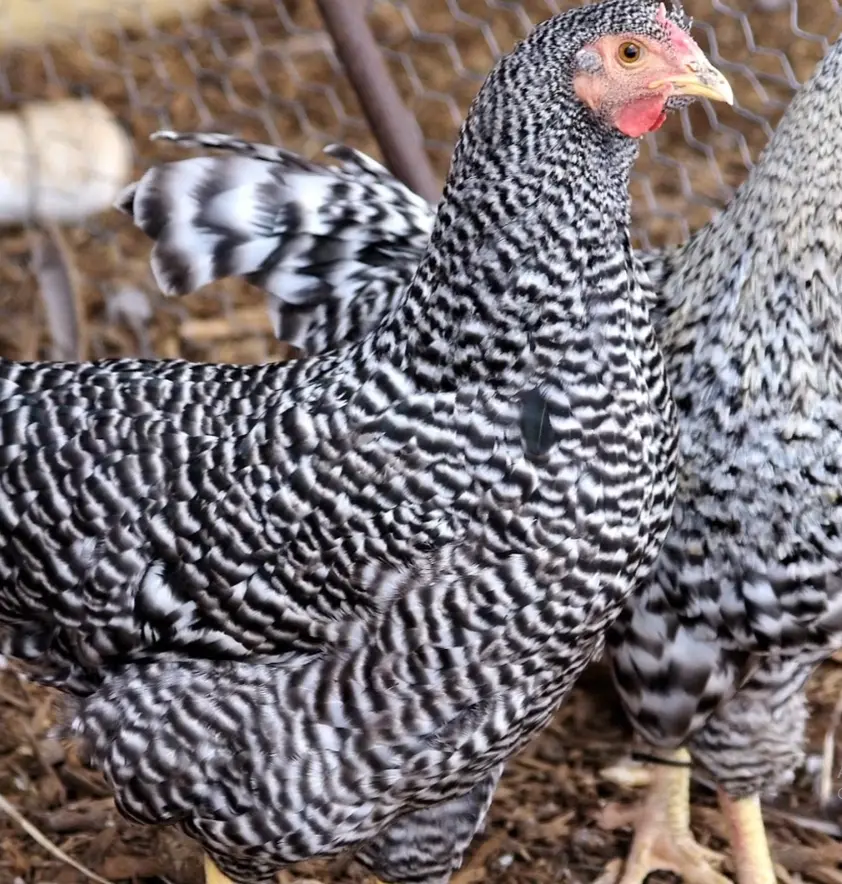
These birds thrive in various conditions due to their close feathering, which keeps them protected in cold weather and hot, humid climates. They are calm and can adapt well to living in confinement, yet they also enjoy free-ranging. Dominique chickens are a great choice for children and fledgling farmers interested in 4-H or other farming competitions.
The females (also referred to as girls) are particularly good mothers and are known to scratch and help raise chicks, showing less tendency toward broodiness than many other breeds. With their moderate size and friendly temperament, they make wonderful additions to any flock.
Egg Production and Brooding Characteristics

Dominique chickens are excellent egg producers with hens typically laying 230-275 medium-size eggs per year. These eggs range from light-to-dark brown in color. Although Dominique is considered a dual-purpose breed, their primary strength lies in egg production.
Some hens can be broody, depending on their line, and broody Dominiques make good mothers, carefully nurturing their eggs and chicks. If you are looking for reliable egg layers with mothering instincts, the Dominique is an excellent choice.
Dominique Vs Barred Rock
The Dominique and Barred Rock chickens share a similar shape and coloring, making it easy to confuse the two. However, there are key differences between them. Barred Rocks have a large single comb and a distinct barred coloring, which refers to their feather pattern.
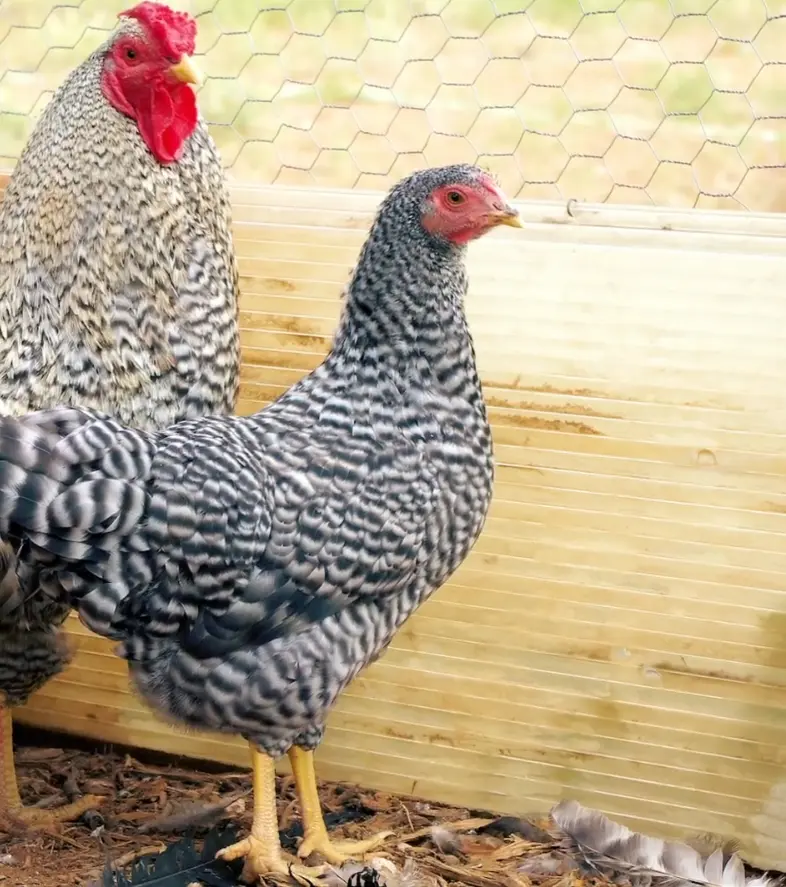
In contrast, the Dominique has a small rose comb and less clear banding on its feathers. While Barred Rocks come in various flavors, including white, Columbian, and partridge Rocks, the Dominique is primarily known for its specific feather pattern and smaller comb. Plymouth Rock is the actual breed name for what is commonly referred to as the Rock, with Barred Rocks being the most popular variety.
Are Dominiques Right for You?
If you’re looking for a friendly and nosy chicken with a fun personality, then the Dominique might be the perfect fit for your flock. These smaller size birds are less intimidating than larger breeds, making them a great choice for people new to keeping chickens or families with kids.
As a chicken size queen, I can tell you that even though they’re not the fluffy giants some might prefer, their charm and laying eggs ability make them a must-have. Whether you’re drawn to their historical drama or their friendly personalities, Dominiques will quickly become a favorite addition to your yard.
Frequently Asked Questions
What’s the Difference Between a Barred Rock and a Dominique Chicken?
The Dominique is smaller than the Barred Rock, which is larger in size. A noticeable difference is the shape of the comb—the Dominique has a rose comb, while the Barred Rock features a single comb. These traits are key to telling them apart.
Are Dominique Chickens Good Layers?
Dominique chickens are excellent egg layers, producing 230-270 eggs per year. They lay medium-sized, tan to light brown eggs. With their small combs and tight feathering, they are cold hardy and can adapt to both hot and humid climates, making them a versatile choice.
What Color Eggs Do Dominique Chickens Lay?
Dominique chickens lay 230-275 eggs per year, ranging from light-to-dark brown and are medium-size. While they are great egg producers, some hens can be broody and make good mothers, especially the broody Dominques.
Are Dominique Chickens Friendly?
Dominique chickens have a sweet, calm personality. They are gentle and friendly, making them great for families with children. These chickens are also hardy and adaptable, able to tolerate both heat and cold.
Conclusion:
the Dominique chicken is a versatile and friendly breed that excels in both egg production and temperament. With their hardy nature, small size, and docile personalities, they are an excellent choice for families, beginner flocks, and those looking for a low-maintenance, reliable bird. Whether you’re interested in their historical significance or their ability to thrive in various climates, Dominiques continue to be a beloved breed for both hobbyists and farmers alike.

